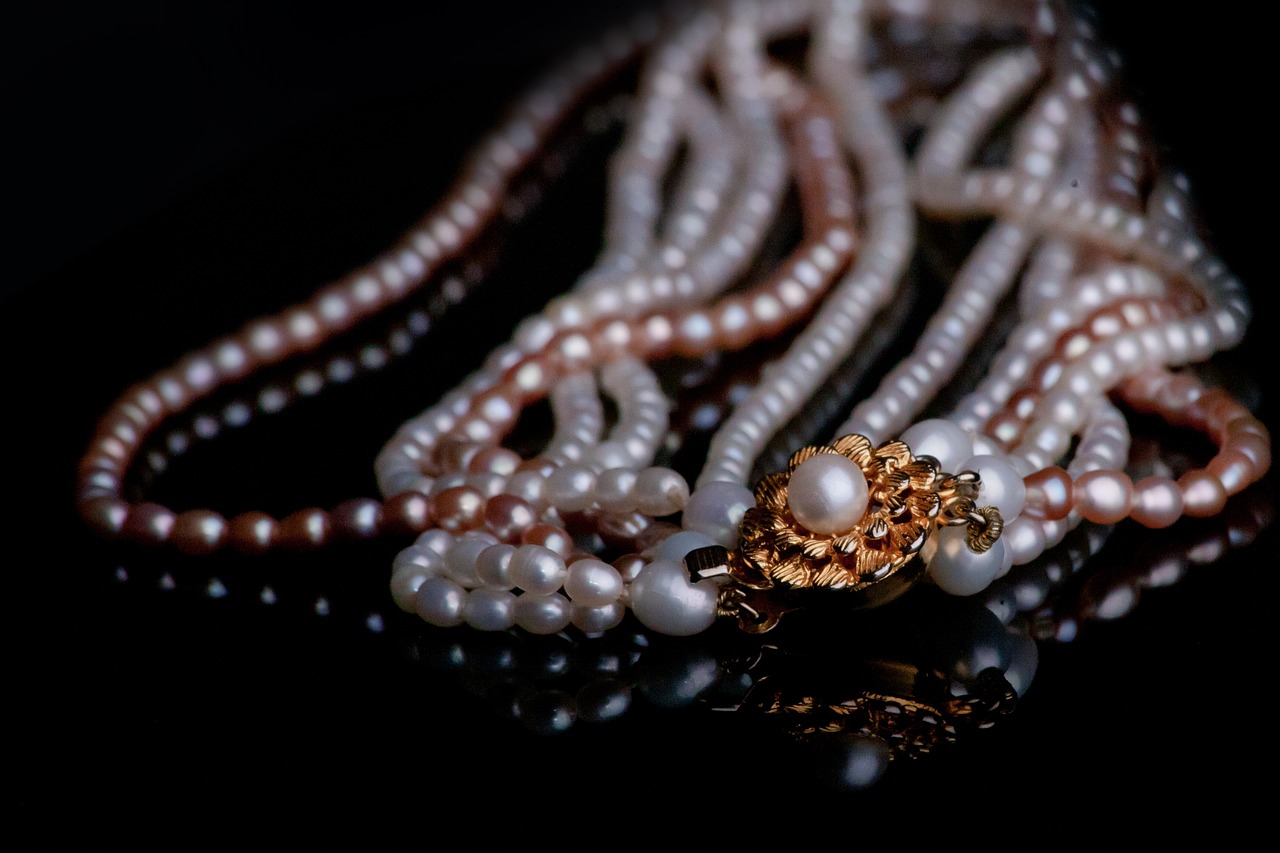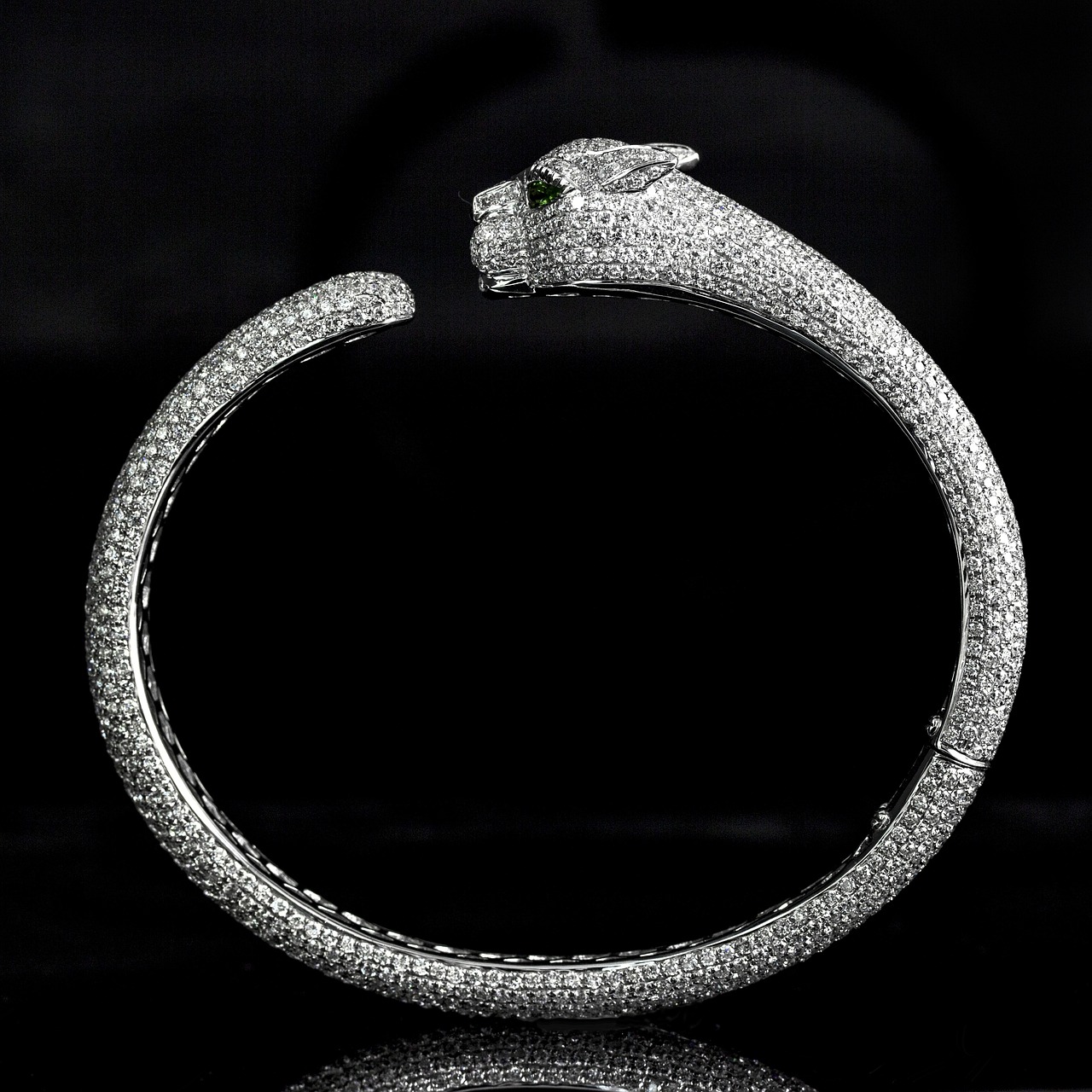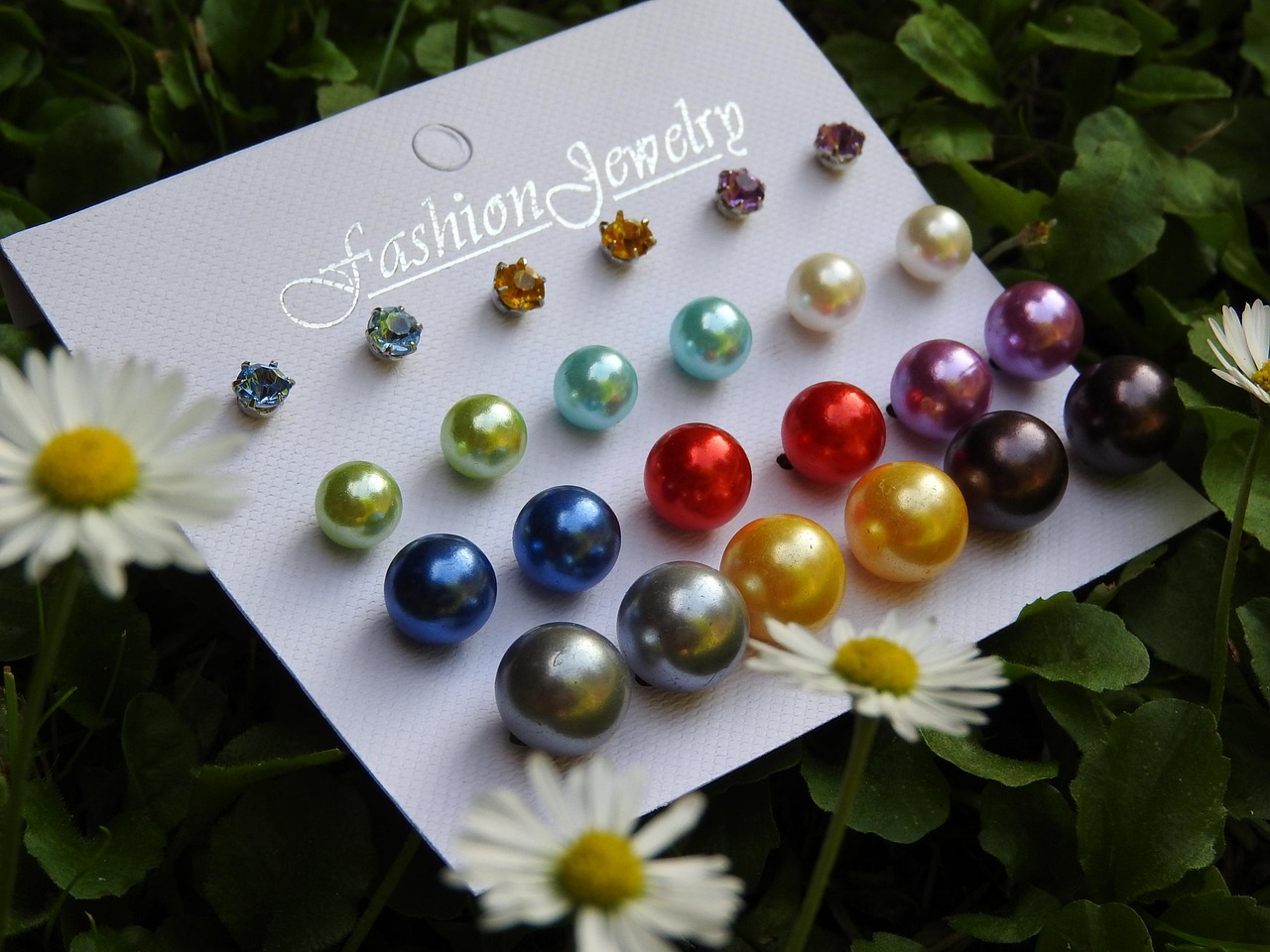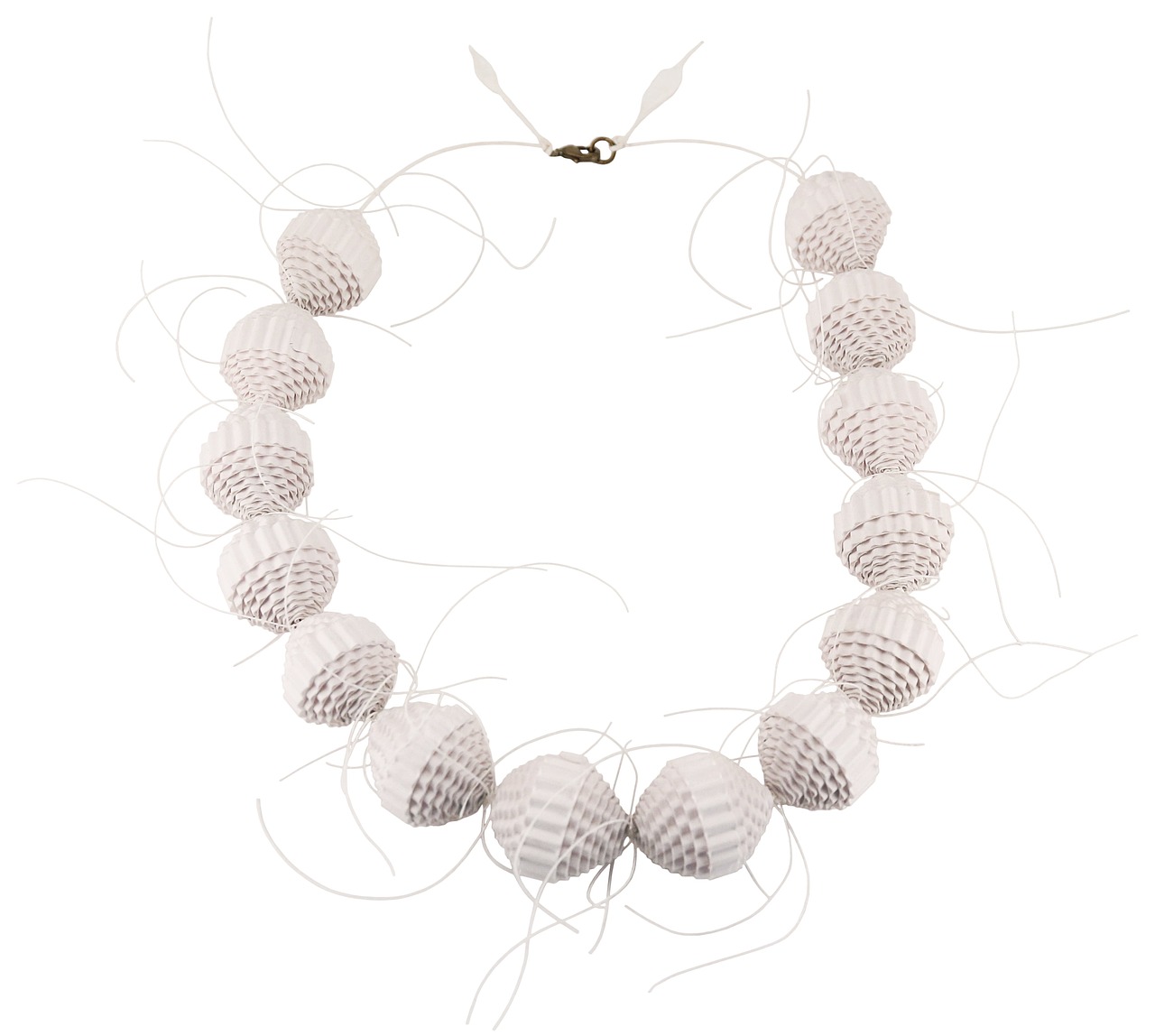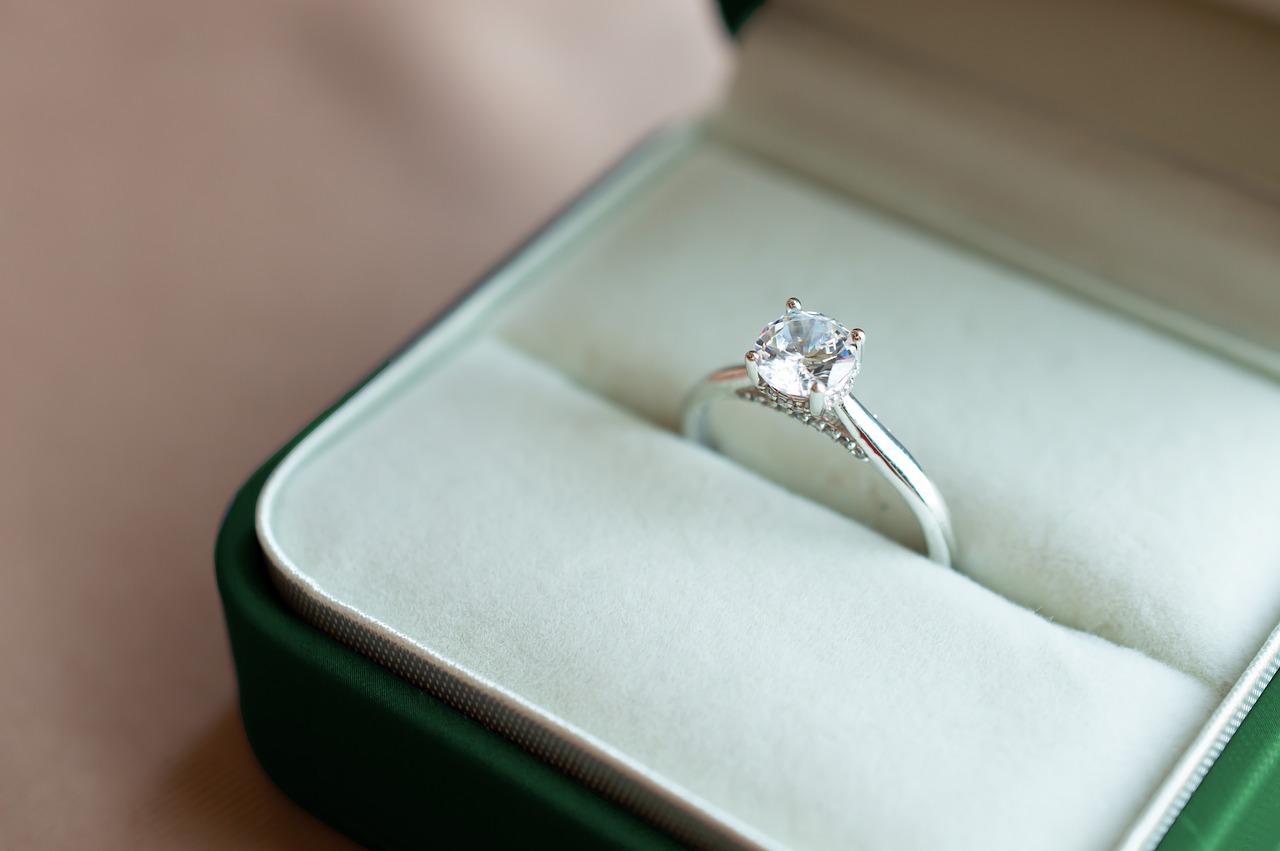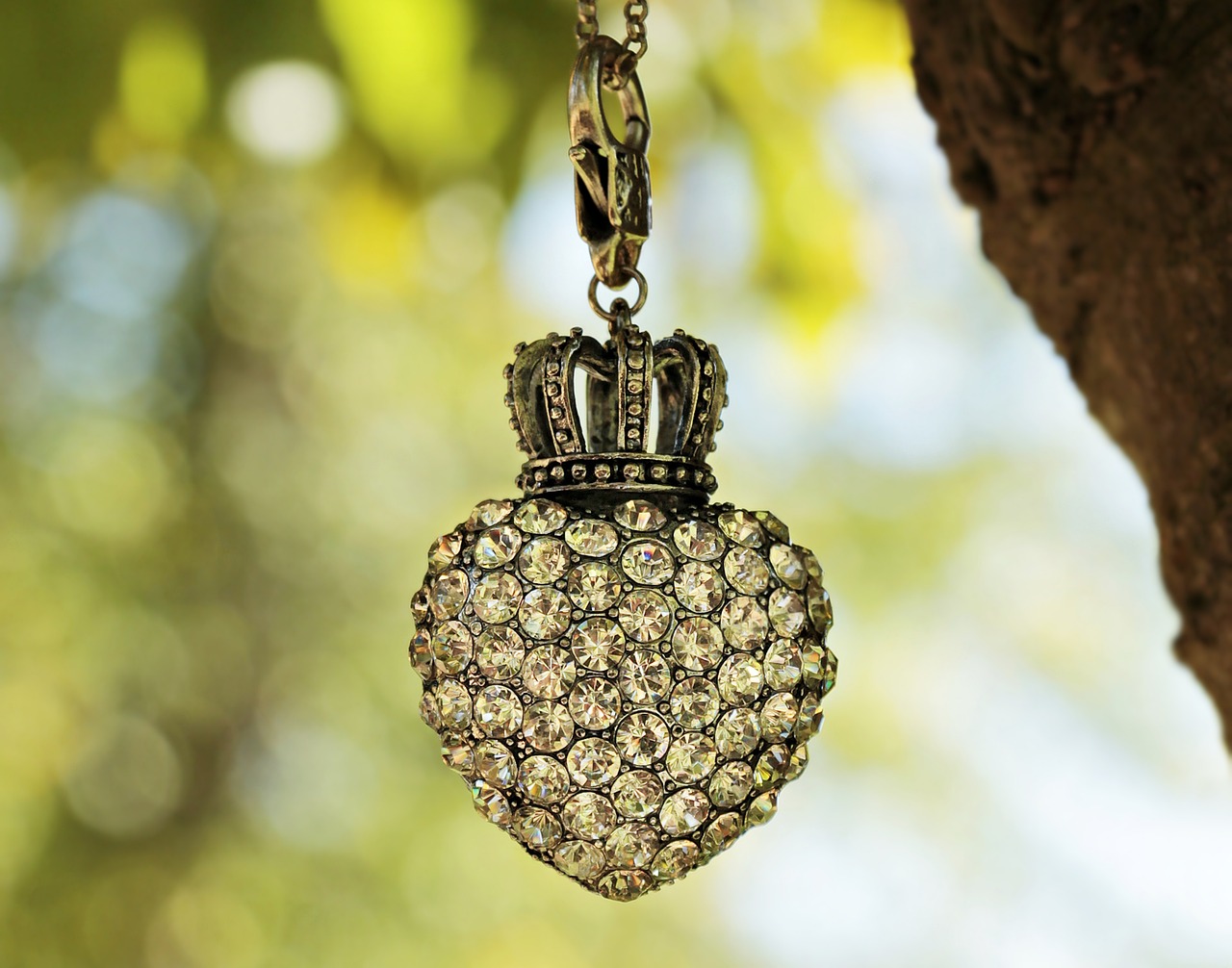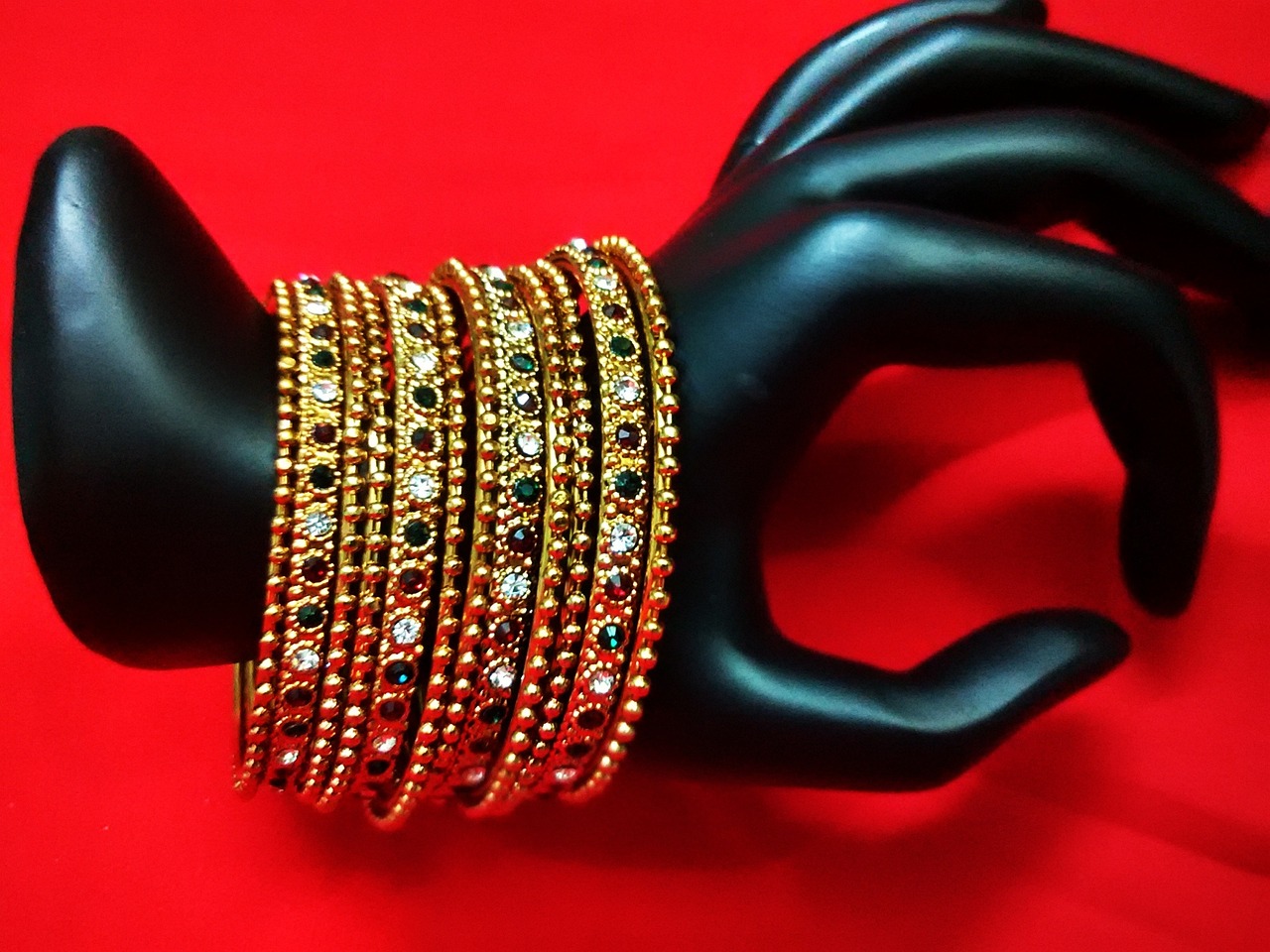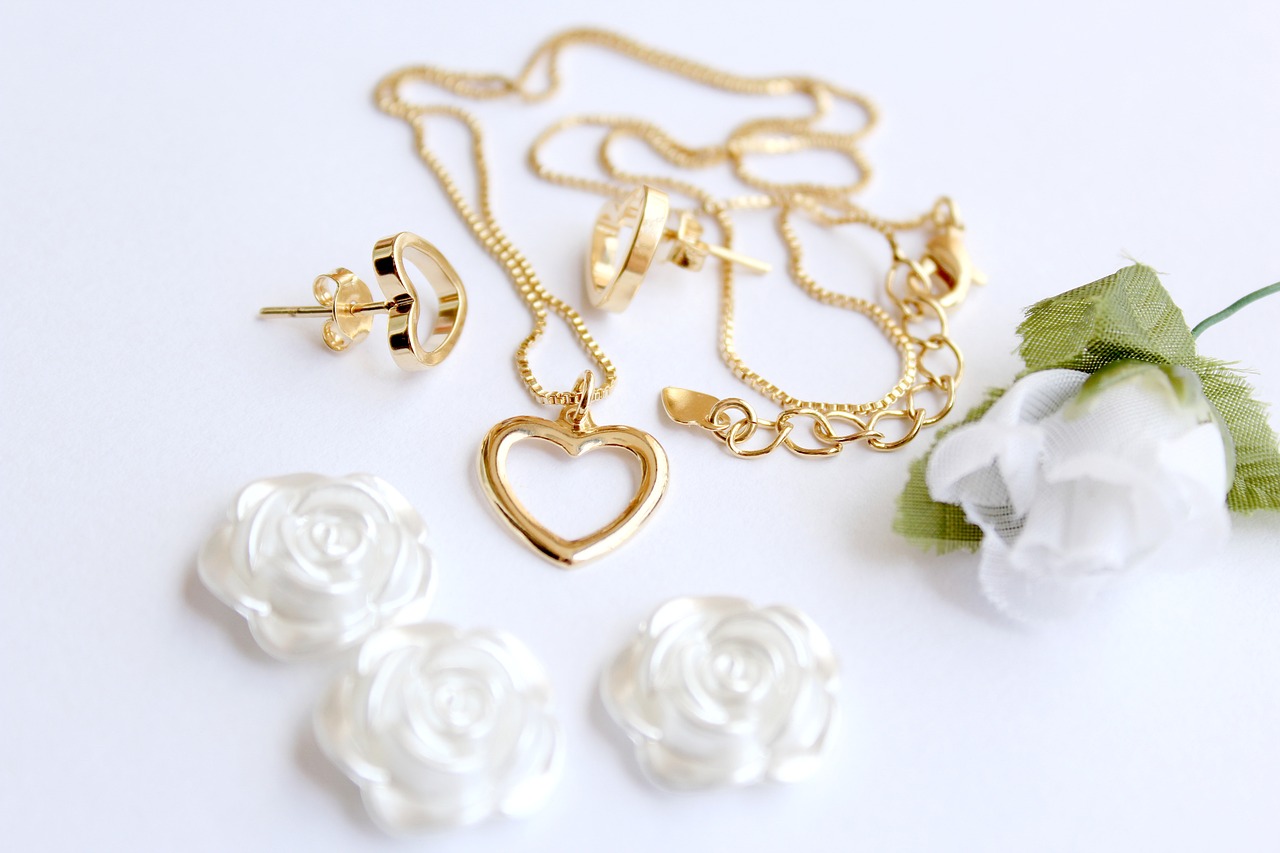This article explores the value retention of luxury jewelry from Tiffany, Cartier, and Van Cleef, examining market trends, consumer preferences, and expert insights to help you make informed investment decisions. Understanding which brand holds its value best can significantly impact your investment choices in the luxury jewelry market.
Value retention in jewelry is crucial for buyers looking to make smart investments. Luxury jewelry is not just a purchase; it is an investment that can appreciate over time. Factors such as brand reputation, craftsmanship, and market demand play a significant role in determining how well a piece of jewelry retains its value. Understanding these elements can help buyers navigate the complexities of the luxury jewelry market.
Tiffany & Co. has built a strong reputation over the years for its exceptional quality and craftsmanship. Tiffany jewelry typically appreciates in value due to its iconic designs and the brand’s enduring legacy. Limited editions and unique pieces tend to have higher resale values, driven by their desirability among collectors.
Tiffany’s distinctive blue box and elegant designs set it apart from competitors. The brand’s heritage, dating back to 1837, adds to its allure. Tiffany’s commitment to ethical sourcing and sustainability also enhances its appeal, making it a preferred choice for conscientious consumers.
The demand for Tiffany jewelry has remained robust, particularly among millennials and Gen Z buyers. Current trends indicate a growing interest in vintage and pre-owned Tiffany pieces, which can fetch impressive resale prices. Understanding these market dynamics can provide valuable insights for potential investors.
Cartier, known for its timeless elegance, also retains its value exceptionally well. The brand’s pieces often appreciate due to their craftsmanship and iconic status. Cartier’s commitment to quality ensures that its jewelry remains in demand, making it a solid investment choice.
Collections like the Love bracelet and Panthère de Cartier are not only popular but also have a proven track record of retaining value. These signature pieces often see increased demand in the resale market, contributing to their overall value retention.
The resale market for Cartier jewelry is thriving, with many pieces selling for significantly more than their original prices. Factors such as rarity, condition, and market trends all influence resale values. Understanding these factors can help investors make informed decisions when considering Cartier jewelry.
Van Cleef & Arpels is celebrated for its innovative designs and high-quality materials. The brand’s unique approach to jewelry-making contributes to its strong value retention. While it may not have the same market presence as Tiffany or Cartier, Van Cleef & Arpels pieces are highly sought after, especially among collectors.
Signature designs like the Alhambra collection are particularly popular and have a loyal following. These pieces often appreciate in value due to their distinctive style and the brand’s dedication to craftsmanship, making them a wise investment choice.
Understanding market trends specific to Van Cleef & Arpels can provide insights into its investment potential. Recent trends indicate a growing interest in vintage and rare pieces, which can significantly impact their value retention.
Determining the best investment among Tiffany, Cartier, and Van Cleef involves analyzing various factors, including brand reputation, market demand, and resale value. Each brand has its strengths and weaknesses, and potential investors should consider their personal preferences and investment goals when making a decision.

Why is Jewelry Value Retention Important?
When investing in luxury jewelry, understanding jewelry value retention is crucial for making informed decisions. The ability of a piece to maintain or appreciate in value can significantly impact your investment strategy. This section delves into the various factors that influence value retention and why it is essential for luxury jewelry investments.
- Brand Reputation: Renowned brands like Tiffany, Cartier, and Van Cleef & Arpels carry a legacy that enhances their pieces’ value. The perception of quality and exclusivity plays a pivotal role in value retention.
- Rarity and Demand: Limited editions or discontinued collections often see a surge in value due to scarcity. High demand for specific designs can also drive prices up in the resale market.
- Material Quality: The use of high-quality materials, such as precious metals and gemstones, directly affects a piece’s longevity and desirability. Well-crafted jewelry tends to retain its value better than mass-produced items.
- Market Trends: Economic conditions and changing consumer preferences can influence jewelry values. Staying informed about market trends can help investors make timely decisions.
Investing in luxury jewelry is not just about owning beautiful pieces; it’s also about securing financial returns. Understanding value retention helps buyers navigate the complexities of the market. Here are some reasons why it matters:
- Investment Security: Jewelry that retains its value can serve as a safeguard against inflation and economic downturns. It represents a tangible asset that can be liquidated if necessary.
- Long-Term Appreciation: Certain pieces can appreciate significantly over time, providing investors with substantial returns. For instance, iconic collections from top brands often see price increases due to their historical significance and cultural value.
- Emotional Value: Jewelry often carries sentimental significance, making it more than just a financial investment. Understanding its value retention can enhance the emotional connection to the piece while also considering its investment potential.
To navigate the luxury jewelry market effectively, buyers should:
- Conduct Research: Familiarize yourself with the brands, their histories, and the specific pieces that have shown consistent value retention.
- Consult Experts: Seek insights from jewelers, appraisers, and market analysts to gain a deeper understanding of trends and valuations.
- Consider Resale Value: When purchasing, think about how easily the piece can be resold in the future. Research past sales to gauge potential resale prices.
In summary, understanding the importance of jewelry value retention is essential for any buyer looking to invest in luxury pieces. By considering the factors that influence value and making informed decisions, you can enhance your investment portfolio while enjoying the beauty and craftsmanship of fine jewelry.

How Do Tiffany Jewelry Pieces Appreciate in Value?
Tiffany & Co. has long been synonymous with luxury, elegance, and superior craftsmanship. The brand’s commitment to quality has established a strong reputation, making its jewelry not just a fashion statement but also a wise investment. This section delves into how Tiffany jewelry pieces appreciate in value over time and the various factors that contribute to this trend.
Several key factors influence the appreciation of Tiffany jewelry:
- Brand Heritage: Tiffany’s rich history, dating back to 1837, adds significant value to its pieces. The brand’s storied past and status as a luxury icon create a strong demand in the market.
- Craftsmanship: Each piece of Tiffany jewelry is meticulously crafted using high-quality materials. This attention to detail ensures durability and longevity, making the pieces more desirable over time.
- Limited Editions: Tiffany often releases limited edition collections, which can create a sense of exclusivity. These pieces tend to appreciate more rapidly due to their rarity.
- Iconic Designs: Signature designs, such as the Tiffany Setting engagement ring, have become timeless classics. Their popularity ensures sustained interest and value retention.
The resale market for Tiffany jewelry is robust, influenced heavily by consumer demand. Recent trends indicate a growing interest in sustainable luxury, which has led to an increase in the resale of pre-owned Tiffany pieces. Buyers are increasingly looking for items that combine quality with ethical considerations.
Additionally, Tiffany’s collaborations and partnerships, such as those with renowned artists and designers, have boosted the brand’s visibility and desirability. This heightened interest translates into higher resale values, making Tiffany jewelry a sound investment.
Investing in Tiffany jewelry can be a wise choice for several reasons:
- Historical Value: Many Tiffany pieces have appreciated significantly over the years, often outpacing inflation rates.
- Market Resilience: Even during economic downturns, luxury goods like Tiffany jewelry tend to retain their value better than non-luxury items.
- Emotional Value: Beyond financial investment, Tiffany jewelry often carries sentimental value, making it a cherished possession.
Experts in the luxury jewelry market suggest that investing in Tiffany pieces is not merely about following trends but understanding the brand’s legacy and craftsmanship. They recommend focusing on classic pieces that have a proven track record of value appreciation. Additionally, maintaining the original packaging and documentation can further enhance resale value.
In conclusion, Tiffany & Co. jewelry pieces not only embody exquisite craftsmanship and timeless design but also serve as viable investments. With factors such as brand heritage, craftsmanship, market demand, and expert insights all contributing to their value appreciation, investing in Tiffany jewelry can be both a stylish and financially savvy decision.
What Makes Tiffany Unique?
Tiffany & Co. stands out in the luxury jewelry market due to its rich brand heritage and iconic designs. These elements not only contribute to the brand’s allure but also play a crucial role in its ability to retain value over time. In this section, we will explore the distinctive features that set Tiffany apart from its competitors, such as Cartier and Van Cleef & Arpels.
- Rich History: Established in 1837, Tiffany has cultivated a legacy of excellence and innovation. The brand’s history is steeped in artistry and craftsmanship, which resonates with consumers who value tradition and quality.
- Iconic Blue Box: The signature Tiffany Blue Box is more than just packaging; it symbolizes luxury and exclusivity. This unique branding element enhances the perceived value of each piece, making it a coveted item for collectors and gift-givers alike.
- Timeless Designs: Tiffany’s designs, such as the Tiffany Setting for engagement rings, are recognized globally. These timeless pieces often appreciate in value due to their enduring popularity and association with significant life moments.
- Commitment to Quality: Tiffany is renowned for its meticulous attention to detail and high standards of craftsmanship. Each piece is made from ethically sourced materials, which not only appeals to environmentally conscious consumers but also enhances the brand’s reputation.
- Celebrity Endorsements: Tiffany has been featured in numerous high-profile films and worn by celebrities, further solidifying its status as a luxury brand. This visibility contributes significantly to consumer demand and resale value.
Moreover, Tiffany’s ability to adapt to changing market trends while maintaining its core values is a testament to its resilience. The brand frequently releases limited-edition collections and collaborates with renowned designers, keeping its offerings fresh and desirable.
In addition, Tiffany’s strong presence in the digital marketplace has expanded its reach, allowing younger generations to engage with the brand. The company’s effective use of social media platforms and online marketing strategies has successfully attracted a new demographic of luxury consumers.
As we analyze the factors contributing to Tiffany’s unique position in the luxury jewelry market, it becomes clear that its heritage and design philosophy are indispensable to its value retention. By offering a combination of historical significance, quality craftsmanship, and contemporary appeal, Tiffany continues to captivate consumers and collectors alike.
In conclusion, Tiffany’s distinctive attributes not only enhance its brand identity but also ensure that its jewelry pieces remain valuable investments. Understanding what makes Tiffany unique is essential for anyone considering a purchase or investment in luxury jewelry.
Market Demand for Tiffany Jewelry
The demand for Tiffany jewelry plays a crucial role in determining its resale value, reflecting both the brand’s prestige and the evolving tastes of consumers. As a leading name in luxury jewelry, Tiffany & Co. benefits from a strong market presence and a loyal customer base. This section delves into the current market trends and consumer preferences that significantly influence the demand for Tiffany pieces.
- Brand Heritage and Reputation: Tiffany & Co. is synonymous with luxury and quality. The brand’s long-standing history, dating back to 1837, has established it as a trusted name in the jewelry industry. This heritage not only attracts new customers but also fosters loyalty among existing ones, ensuring a steady demand for their products.
- Iconic Designs: Tiffany’s signature designs, such as the Tiffany Setting engagement ring and the Return to Tiffany collection, are highly sought after. These iconic pieces hold a special place in the hearts of consumers, driving demand and enhancing their resale value.
- Market Trends: Recent trends indicate a growing interest in sustainable and ethically sourced jewelry. Tiffany has made significant strides in this area, committing to responsible sourcing of materials. This commitment not only appeals to environmentally conscious consumers but also boosts the brand’s appeal in the resale market.
- Consumer Preferences: Today’s consumers are increasingly valuing uniqueness and personalization in their jewelry choices. Tiffany’s ability to offer customizable options, such as engravings and bespoke designs, caters to this demand, making their pieces more desirable and valuable over time.
- Investment Potential: Many buyers view Tiffany jewelry as an investment. The perception of Tiffany pieces as valuable assets drives demand, particularly among collectors and investors looking for items that appreciate in value.
Impact of Economic Factors
Economic conditions also play a significant role in shaping the demand for Tiffany jewelry. During periods of economic growth, consumers are more likely to invest in luxury items. Conversely, economic downturns can lead to decreased spending on non-essential goods. However, Tiffany’s strong brand loyalty often allows it to weather economic fluctuations better than lesser-known brands.
The Role of Social Media and Influencers
In today’s digital age, social media platforms and influencers have a profound impact on consumer behavior. Tiffany’s strategic marketing campaigns, often featuring high-profile celebrities and influencers, create buzz and drive demand. The visibility of Tiffany jewelry on social media platforms enhances its desirability, especially among younger consumers who are influenced by online trends.
Resale Market Dynamics
The resale market for Tiffany jewelry is robust, with platforms dedicated to luxury consignment and resale. This market not only reflects the enduring appeal of Tiffany pieces but also provides insights into consumer demand. As more buyers turn to the resale market for affordable luxury, the resale value of Tiffany jewelry remains strong, further solidifying its status as a valuable investment.
In summary, the demand for Tiffany jewelry is influenced by a combination of brand heritage, iconic designs, market trends, consumer preferences, and economic factors. By understanding these elements, potential buyers can make informed decisions about investing in Tiffany pieces, ensuring that they not only enjoy the beauty of the jewelry but also its potential for value appreciation over time.

What About Cartier’s Value Retention?
Cartier is synonymous with luxury, renowned for its timeless elegance and exceptional craftsmanship. As an esteemed name in the jewelry industry, Cartier pieces are not only coveted for their beauty but also for their impressive ability to retain value over time. This section delves into the factors that contribute to Cartier’s market performance and how its jewelry maintains its allure in both primary and resale markets.
The value retention of Cartier jewelry can be attributed to several key factors:
- Brand Heritage: Established in 1847, Cartier has a rich history that enhances its prestige. The brand’s legacy is a significant component of its value.
- Craftsmanship: Each piece of Cartier jewelry is crafted with meticulous attention to detail, utilizing high-quality materials such as gold, platinum, and precious stones, which contribute to its longevity.
- Iconic Designs: Collections like the Love bracelet and Panthère de Cartier have become cultural symbols, making them highly sought after.
- Limited Editions: Many Cartier pieces are produced in limited quantities, creating a sense of exclusivity that drives demand and value.
Cartier’s iconic collections significantly influence its overall value retention. The Love Collection, for instance, is not only a fashion statement but also a symbol of enduring love and commitment. Its popularity ensures a robust resale market, with many pieces appreciating in value over time.
Similarly, the Panthère Collection, known for its bold and adventurous designs, attracts collectors and fashion enthusiasts alike. The uniqueness of these collections creates a strong demand, which is crucial for maintaining market value.
The resale market for Cartier pieces is thriving, reflecting the brand’s sustained desirability. According to recent market analyses, Cartier jewelry often sells at prices close to or even exceeding their original retail values, particularly for iconic pieces. Factors contributing to this trend include:
- Consumer Demand: The demand for Cartier jewelry remains high, driven by both new buyers and collectors looking to invest in timeless pieces.
- Condition and Rarity: Well-maintained pieces, especially those that are rare or discontinued, tend to command higher prices in the resale market.
- Market Trends: As luxury jewelry becomes increasingly popular among younger generations, Cartier’s timeless designs continue to appeal, ensuring robust market performance.
Experts in the luxury jewelry market consistently highlight Cartier’s strong position due to its blend of traditional craftsmanship and modern appeal. According to a recent report by a leading luxury goods analyst, Cartier’s ability to innovate while staying true to its heritage allows it to remain relevant in a competitive market.
Additionally, the rise of online marketplaces has made it easier for consumers to access Cartier pieces, further boosting their resale value. The transparency of pricing and availability in these platforms has created a more informed buyer base, enhancing the overall market for Cartier jewelry.
In conclusion, Cartier’s enduring elegance, combined with its strategic brand positioning and iconic collections, contributes significantly to its value retention. As both a luxury brand and an investment, Cartier jewelry continues to captivate collectors and fashion enthusiasts alike, solidifying its status as a wise choice for those looking to invest in high-quality luxury pieces.
Iconic Cartier Collections
When it comes to luxury jewelry, few brands evoke as much admiration and loyalty as Cartier. Among its extensive offerings, the Love and Panthère collections stand out as iconic symbols of elegance and craftsmanship. These collections not only capture the essence of Cartier’s heritage but also play a significant role in the brand’s value retention in the luxury jewelry market.
The Love Collection, introduced in the 1970s, has become synonymous with timeless romance and commitment. Characterized by its unique locking mechanism, the Love bracelet symbolizes unbreakable bonds. This emotional connection enhances its desirability, making it a sought-after piece among collectors and couples alike. The enduring popularity of the Love collection contributes to its impressive value retention, as demand remains high in both primary and secondary markets.
The Panthère Collection is another hallmark of Cartier’s artistry, showcasing the brand’s ability to blend luxury with bold design. Inspired by the graceful and fierce nature of the panther, this collection features intricate designs that appeal to a wide range of tastes. The craftsmanship involved in creating each piece ensures that they are not only visually stunning but also durable, further enhancing their value retention.
The emotional and aesthetic appeal of both the Love and Panthère collections significantly influences their market performance. Scarcity plays a crucial role; limited editions and discontinued pieces often see a surge in value as collectors seek to own a part of Cartier’s legacy. Additionally, the brand’s reputation for quality craftsmanship ensures that these pieces remain desirable over time.
The demand for Cartier jewelry, particularly from the Love and Panthère collections, is driven by a combination of factors, including celebrity endorsements, fashion trends, and social media influence. As more individuals seek to invest in luxury items that hold their value, Cartier’s iconic collections continue to attract attention. This growing demand positively impacts resale values, making Cartier pieces a wise investment choice.
Experts in the luxury jewelry market consistently highlight the importance of brand heritage and emotional connections in determining value retention. Cartier’s storied history and the narratives surrounding its collections enhance their allure, making them more than mere accessories; they are symbols of status and sophistication. According to industry analysts, Cartier jewelry, especially from the Love and Panthère lines, tends to appreciate over time, further solidifying its position as a valuable asset.
In conclusion, Cartier’s iconic collections, particularly the Love and Panthère, are not only celebrated for their exquisite design and craftsmanship but also for their remarkable ability to retain value. As these collections continue to captivate new generations of enthusiasts, they represent a sound investment for those looking to enter the luxury jewelry market.
Cartier in the Resale Market
The resale market for Cartier pieces is not only robust but also indicative of the brand’s enduring appeal and value retention. As one of the most prestigious names in luxury jewelry, Cartier has cultivated a loyal clientele that significantly influences its resale dynamics.
In recent years, the resale market for Cartier jewelry has shown remarkable growth, driven by a combination of factors including brand recognition, the quality of craftsmanship, and the timeless design of its pieces. The demand for Cartier items, especially iconic collections like the Love bracelet and Panthère de Cartier, has remained consistently high among collectors and investors alike.
- Increased Demand: The demand for Cartier jewelry has surged, particularly in urban centers where luxury consumption is on the rise. This demand is fueled by both seasoned collectors and younger consumers who view Cartier as a status symbol.
- Value Appreciation: Many Cartier pieces appreciate in value over time, with some limited editions and vintage items fetching significantly higher prices than their original retail values. This trend highlights the brand’s strong market position.
- Online Resale Platforms: The emergence of online resale platforms has made it easier for buyers and sellers to connect, increasing the liquidity of Cartier pieces. Websites dedicated to luxury goods have become essential marketplaces for reselling.
Cartier’s rich history and reputation for excellence play a crucial role in its resale value. Founded in 1847, the brand has established itself as a hallmark of luxury, synonymous with sophistication and elegance. This heritage not only attracts buyers but also ensures that Cartier pieces retain their allure over time.
Moreover, Cartier’s commitment to quality craftsmanship means that even older pieces remain in excellent condition, further enhancing their resale potential. Collectors often seek vintage items that showcase the brand’s evolution, making these pieces highly sought after in the resale market.
Cartier’s iconic collections, such as the Love bracelet, Juste un Clou, and Ballon Bleu, are pivotal in shaping resale trends. These collections are not only popular among consumers but also serve as benchmarks for value retention. The Love bracelet, for instance, has become a cultural phenomenon, leading to its high resale value and constant demand.
Furthermore, limited edition pieces from these collections often appreciate significantly, making them attractive investments for collectors. The exclusivity and desirability of such items contribute to their strong performance in the resale market.
- Condition: The condition of a piece greatly impacts its resale value. Buyers should look for items that are well-maintained and come with original packaging and documentation.
- Authenticity: Ensuring the authenticity of Cartier pieces is crucial. Buyers should seek reputable sellers and consider obtaining certificates of authenticity when purchasing high-value items.
- Market Trends: Staying informed about market trends can help buyers make strategic decisions. Understanding which collections are in demand and what factors drive value can enhance investment outcomes.
In summary, the resale market for Cartier jewelry reflects the brand’s strong value retention and appeal. With increasing demand, iconic collections, and a rich heritage, investing in Cartier pieces can be a wise decision for those looking to enter the luxury jewelry market.

How Does Van Cleef & Arpels Compare?
When it comes to luxury jewelry, Van Cleef & Arpels stands out for its innovative designs and use of high-quality materials. This section delves into how the brand’s jewelry retains its value, particularly when compared to industry giants like Tiffany and Cartier. Understanding the nuances of value retention in luxury jewelry can significantly influence investment decisions.
Van Cleef & Arpels is renowned for its distinctive designs, such as the Alhambra collection, which features a unique quatrefoil motif symbolizing luck and prosperity. These signature designs not only enhance the brand’s appeal but also contribute to its value retention. The craftsmanship involved in each piece is meticulous, with artisans dedicating significant time to ensure quality and uniqueness, which is a key factor in maintaining resale value.
The market for Van Cleef & Arpels jewelry is influenced by several factors, including consumer preferences and global economic conditions. In recent years, there has been a growing interest in vintage and pre-owned luxury items, which has positively impacted the resale market for Van Cleef pieces. The brand’s limited editions and exclusive collections often see a surge in demand, further enhancing their value.
Investing in Van Cleef & Arpels jewelry can be a wise choice for several reasons. Firstly, the brand’s heritage and prestige contribute to a strong demand in the resale market. Secondly, the rarity of certain pieces, particularly those from limited collections, makes them highly sought after by collectors. This demand can lead to significant appreciation in value over time.
While Tiffany and Cartier are also leaders in the luxury jewelry market, Van Cleef & Arpels offers a different aesthetic and emotional appeal. Tiffany is often associated with its iconic blue box and engagement rings, while Cartier is known for its timeless elegance and classic designs. In contrast, Van Cleef & Arpels emphasizes creativity and artistry, which can resonate with a different segment of the luxury market.
The signature designs of Van Cleef & Arpels, such as the aforementioned Alhambra and the Perlée collection, play a crucial role in the brand’s value retention. These designs are not only visually striking but also carry a story and heritage that appeal to buyers and collectors alike. The emotional connection that consumers have with these pieces can lead to a higher willingness to pay, thus supporting their resale value.
Despite its strengths, Van Cleef & Arpels faces challenges in the resale market, such as competition from other luxury brands and fluctuating economic conditions. Additionally, the authenticity of pre-owned pieces can be a concern for buyers, making it essential for sellers to provide verified documentation. Nevertheless, the brand’s commitment to quality and design continues to uphold its reputation and value.
In summary, while Van Cleef & Arpels may not always match the immediate resale values of Tiffany or Cartier, its unique designs and craftsmanship offer a compelling investment opportunity for those who appreciate the artistry of luxury jewelry. By understanding the market trends and the factors influencing value retention, investors can make informed decisions when considering pieces from this illustrious brand.
Signature Designs of Van Cleef & Arpels
When it comes to luxury jewelry, the signature designs of Van Cleef & Arpels, particularly the Alhambra collection, play a crucial role in enhancing the brand’s desirability and value retention. This section delves into how these iconic designs contribute to the overall appeal and market performance of Van Cleef jewelry.
The Alhambra collection is perhaps the most recognizable line from Van Cleef & Arpels. Launched in 1968, its design is inspired by the four-leaf clover, symbolizing luck and prosperity. The use of high-quality materials, such as gold and precious stones, combined with its timeless elegance, makes it a coveted piece among collectors and enthusiasts alike. The versatility of the Alhambra pieces allows them to be worn on various occasions, thereby increasing their desirability.
Signature designs like the Alhambra not only enhance the aesthetic appeal of Van Cleef jewelry but also significantly influence its value retention. The uniqueness of these designs creates a strong brand identity, making them instantly recognizable. As a result, pieces from this collection often hold their value exceptionally well in the resale market. Collectors are willing to pay a premium for authentic Alhambra pieces, further solidifying their status as a wise investment.
Van Cleef & Arpels frequently releases limited edition pieces and collaborates with renowned artists. These exclusive items often appreciate in value due to their rarity. For instance, a limited-edition Alhambra piece can see a significant increase in resale value, as collectors actively seek out unique items to add to their collections. This trend highlights how the brand’s commitment to innovation and creativity contributes to enhanced value retention.
The desirability of Van Cleef jewelry is also shaped by consumer perception. The brand is synonymous with luxury and prestige, which attracts a clientele that values both aesthetics and investment potential. As demand for these signature designs continues to grow, so does their market value. The Alhambra collection, in particular, has become a staple among luxury jewelry enthusiasts, further driving demand and ensuring that these pieces maintain their worth over time.
Experts in the luxury jewelry market emphasize the significance of brand heritage and design innovation when assessing value retention. Van Cleef & Arpels stands out due to its rich history and commitment to quality craftsmanship. The brand’s ability to adapt to changing trends while maintaining its core identity has positioned it favorably in the market. As a result, pieces from the Alhambra collection are not only seen as beautiful accessories but also as valuable investments.
In summary, the signature designs of Van Cleef & Arpels, particularly the Alhambra collection, play a pivotal role in enhancing the brand’s desirability and value retention. By combining timeless elegance with innovative design, Van Cleef has established itself as a leader in the luxury jewelry market. As consumers continue to seek pieces that offer both beauty and investment potential, the allure of Van Cleef & Arpels remains strong.
Market Trends for Van Cleef Jewelry
Understanding the market trends specific to Van Cleef & Arpels is essential for gauging its investment potential in the luxury jewelry sector. This section delves into the current market dynamics and their implications for value retention, providing insights that are crucial for both collectors and investors.
In recent years, Van Cleef & Arpels has seen a noticeable shift in consumer preferences, particularly among younger buyers who are increasingly drawn to the brand’s unique designs and rich heritage. The iconic Alhambra collection, known for its distinctive clover motifs, has become a symbol of luxury and sophistication, driving demand in both new and resale markets.
One of the most significant trends is the growing interest in sustainable luxury. Consumers are now more aware of the ethical implications of their purchases, leading brands like Van Cleef to emphasize their commitment to sustainable sourcing and responsible practices. This not only enhances the brand’s reputation but also contributes positively to its value retention as buyers are willing to pay a premium for ethically produced items.
Additionally, the digital transformation of the luxury market has opened new avenues for Van Cleef. Online sales platforms and social media marketing have made it easier for the brand to reach a broader audience. The ability to showcase intricate designs and craftsmanship through high-quality visuals has attracted a younger demographic, further supporting the brand’s market position.
Another noteworthy trend is the increasing popularity of vintage and pre-owned pieces. As collectors seek unique items with history, the resale value of Van Cleef jewelry has surged. This trend is particularly evident in pieces that are no longer in production, making them highly sought after. The brand’s ability to maintain desirability over time is a key factor in its overall value retention.
Furthermore, expert insights suggest that the global economic climate plays a crucial role in luxury investments. Economic stability tends to boost consumer confidence, resulting in increased spending on luxury items. Conversely, during economic downturns, luxury jewelry often retains its value better than other assets, making it an attractive option for investors looking to safeguard their wealth.
In summary, the market trends surrounding Van Cleef & Arpels jewelry indicate a strong potential for value retention. Factors such as consumer preferences for sustainable luxury, the impact of digital marketing, the demand for vintage pieces, and the influence of the economic climate all contribute to the brand’s investment appeal. By staying informed about these trends, investors can make more educated decisions regarding their luxury jewelry investments.

Which Brand is the Best Investment?
When considering luxury jewelry investments, the question of which brand holds its value best often arises. Tiffany & Co., Cartier, and Van Cleef & Arpels are three of the most prestigious names in the industry, each with unique attributes that influence their market performance. This analysis aims to provide a comprehensive overview of each brand’s strengths and weaknesses regarding value retention.
Value retention in luxury jewelry is influenced by several factors, including brand reputation, craftsmanship, design uniqueness, and market demand. Understanding these elements is crucial for potential investors.
Tiffany is renowned for its exceptional quality and iconic blue boxes. The brand’s history and its association with significant cultural moments, such as engagements and weddings, enhance its value retention. Tiffany pieces often appreciate due to their timeless designs and the brand’s commitment to sustainability, which resonates with today’s environmentally conscious consumers.
Cartier’s reputation for timeless elegance is unmatched. The brand’s iconic collections, such as the Love and Panthère lines, have a dedicated following that drives demand. Cartier jewelry not only retains its value but often appreciates due to its limited availability and the craftsmanship that goes into each piece. The resale market for Cartier is robust, reflecting a strong demand for pre-owned pieces.
Van Cleef & Arpels is celebrated for its innovative designs, particularly the Alhambra collection, which has become a symbol of luxury. The brand’s commitment to high-quality materials and intricate craftsmanship contributes to its value retention. Van Cleef pieces often see appreciation due to their unique designs and the brand’s ability to create highly sought-after limited editions.
| Brand | Strengths | Weaknesses |
|---|---|---|
| Tiffany & Co. | Strong brand heritage, sustainability focus | Higher price point may limit accessibility |
| Cartier | Timeless elegance, robust resale market | Less innovation in recent designs |
| Van Cleef & Arpels | Unique designs, high-quality materials | Limited availability can drive prices up |
Determining the best investment among Tiffany, Cartier, and Van Cleef requires a nuanced analysis of each brand’s strengths and weaknesses. Tiffany stands out for its strong brand loyalty and sustainability efforts, which appeal to modern consumers. Cartier offers timeless pieces with a robust resale market, making it a solid investment choice. Meanwhile, Van Cleef & Arpels captivates with its unique designs and high-quality craftsmanship, attracting collectors and investors alike.
Ultimately, the best investment depends on individual preferences, market trends, and the specific pieces in question. Investors should consider not only the current market value but also the long-term appreciation potential of each brand’s jewelry.
Frequently Asked Questions
- Which brand holds its value best?
While all three brands—Tiffany, Cartier, and Van Cleef & Arpels—have strong value retention, Cartier is often regarded as the best investment due to its timeless designs and robust resale market.
- What factors influence jewelry value retention?
Several factors impact the value retention of luxury jewelry, including brand reputation, craftsmanship, market demand, and the uniqueness of designs. Limited editions and iconic collections tend to appreciate more over time.
- Are Tiffany pieces a good investment?
Absolutely! Tiffany jewelry is known for its high-quality craftsmanship and iconic designs, which contribute to its appreciation in value. The brand’s strong heritage also enhances its desirability.
- How does the resale market affect Cartier’s value?
The resale market for Cartier is quite robust. High demand for iconic collections like the Love and Panthère often results in strong resale prices, making Cartier a reliable choice for investment.
- What makes Van Cleef & Arpels unique?
Van Cleef & Arpels is celebrated for its innovative designs and the use of high-quality materials. Signature collections, such as the Alhambra, significantly enhance its desirability and value retention.
